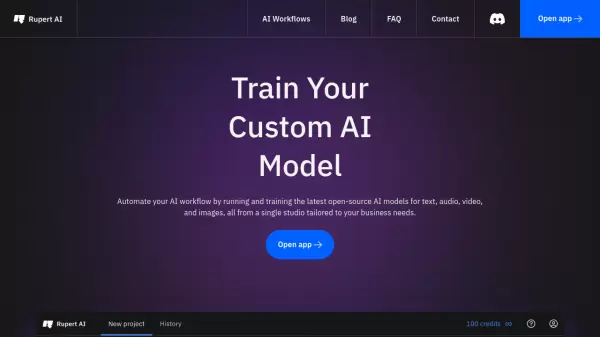What is Rupert AI?
Rupert AI serves as a comprehensive AI platform that consolidates various AI capabilities into a unified studio environment. The platform specializes in providing access to the latest open-source AI models across multiple modalities including text, audio, video, and image processing.
The platform offers specialized workflows for different business needs, including AI fashion model generation, Facebook ad testing, and AI product photography. These workflows are designed to streamline business operations and optimize marketing efforts through intelligent automation and analysis.
Features
- Custom AI Model Training: Train and run open-source AI models specific to business needs
- Multi-modal Processing: Support for text, audio, video, and image AI models
- Fashion Model Generator: AI-powered tool for virtual apparel try-ons
- Ad Testing Algorithm: Pre-test and rank images for Facebook ad campaigns
- Product Photography Generator: AI-powered professional product photo creation
Use Cases
- E-commerce product photography generation
- Fashion catalog creation
- Facebook advertising optimization
- Marketing visual content creation
- Custom AI workflow automation
- Business process optimization
FAQs
-
What types of AI models does Rupert AI support?
Rupert AI supports various types of AI models including text, audio, video, and image processing models, all accessible through a single platform. -
Can businesses get custom AI workflows?
Yes, Rupert AI offers customization options for AI workflows tailored to specific business operations and needs.
Related Queries
Helpful for people in the following professions
Featured Tools
Join Our Newsletter
Stay updated with the latest AI tools, news, and offers by subscribing to our weekly newsletter.











